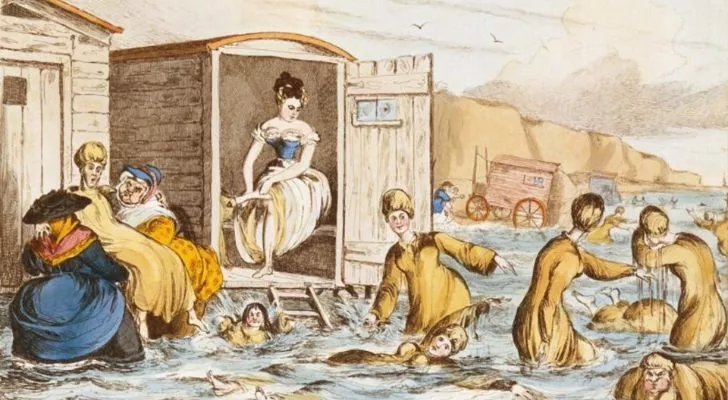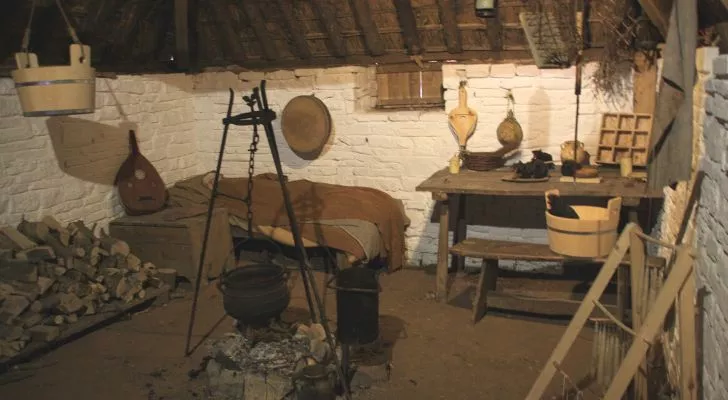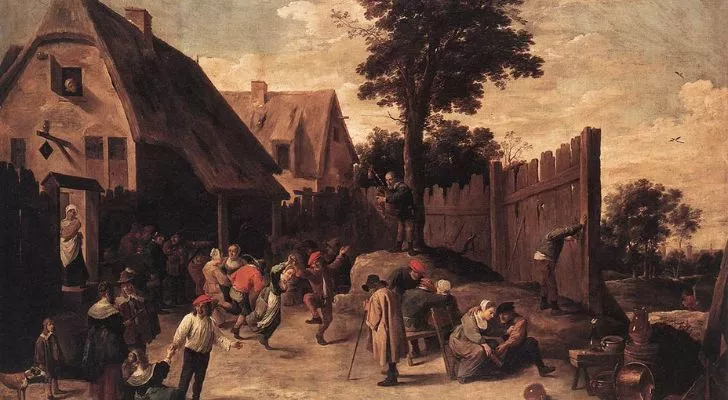The standards for hygiene vary from one generation to the next. What was once considered normal by one generation may seem filthy years later.
This change is often for the better as cleaner practices eliminate or significantly reduce preventable diseases.
The medieval age isn’t the model for cleanliness. So let’s take a look at some unhygienic practices from this era.
They didn’t bathe often.

How many times do you shower daily? Whatever your answer is, it’s probably more than the average person in the medieval age.
They would generally go for at least a few days before taking a bath. This might seem odd now, but it wasn’t all their fault.
Water wasn’t always available, so one couldn’t bathe frequently. As a result, many people would go to streams, lakes, or rivers to clean themselves up.
It was a risky activity, especially for those who couldn’t swim well. So people also visited public baths.
They shared bath water.

You probably won’t want to visit a medieval-age bathhouse.
The warm bath wouldn’t be so relaxing once you know where the water comes from.
Bathhouses used firewood to heat water for patrons.
Water was scarce, and so after a guest finished their bath, the next one jumped in without a water change.
This would go on for a few cycles. Multiple people could also share the same bath at a time.
Thankfully, modern bathhouses don’t have any problem getting clean water, so you won’t be using someone else’s bath water.
They used rivers as toilets.

If you ever travel back to the medieval age, don’t take a sip from the rivers. They served as public bathrooms.
Without water closet toilets or running water, people had limited options.
Some high-income households had latrines, while others relieved themselves in nearby bodies of water.
As you would imagine, water hygiene became a problem pretty quickly. Most surrounding water bodies were too dirty for drinking.
So, what did the average person living in the medieval age drink?
Well, they definitely didn’t drink from the lakes or ponds – that would make them sick. Instead, they mainly chugged alcoholic beverages.
Some writers in the 15th century encouraged pregnant women to drink wine over water.
Their houses had no concrete floors.

Straw mixed with herbs was strewn across the ground.
This would stay on for a long time, but cleaning wasn’t easy as dirt and moisture would build up, giving the entire house a musty smell.
Also, straw floors were excellent hiding places for rodents and other pests.
The plague soon had people looking for better floors.
Wooden floors became popular because they were much easier to clean. People used rugs, animal hides, or carpets over their wooden floors.
Wealthier homes had clay or marble floors.
They emptied chamber pots in the streets.

People often had chamber pots beside their beds to relieve themselves through the night.
What they did with its contents the following day might make you shudder.
Residents would throw the contents of their chamber pots over their balconies into the streets.
If you were walking through the streets without paying much attention, you might miss the warning and end up drenched in overnight urine.
In some cities, people will throw poop from their balconies too.
The pandemic made us familiar with wearing face masks in the streets, but in the medieval period, they wore nosebags for different reasons.
All that waste thrown into the streets would remain there for a while. The nosebags contained flowers to help people deal with the stench.
They didn’t wash their hands often.

You probably wash your hands more than a few times each day, but this wasn’t the norm in medieval times.
Even now, people sometimes eat without washing their hands, which is generally seen as unhygienic.
But due to lack of fresh, clean water, sometimes washing hands properly just wasn’t an option.
They didn’t always use soap.

Even among people who washed their hands, not everyone used soap.
They may splash on a bit of water before drying their hands.
When people used soap, they were most likely not scrubbing away dirt for the mandatory 20 seconds.
Even when their hands appear clean, they probably still contain illness-causing germs.
They treated wounds with urine.

You’ve probably heard people suggest peeing on a jellyfish sting.
In medieval times, people also used urine to treat bruises and other open wounds.
There are some problems with urine therapy.
It’s not an entirely sterile solution but contains small amounts of bacteria that increase when stored.
Treating open wounds with stored urine exposes a person to infection.
Fortunately, thanks to modern antiseptics, this isn’t a risk you have to take anymore.
There are lots of fascinating things to learn from the medieval ages.
Although these practices may not be the most sanitary, it’s still quite impressive to see how far we’ve come.
That said, we shouldn’t follow any of these medieval hygienic practices.


















